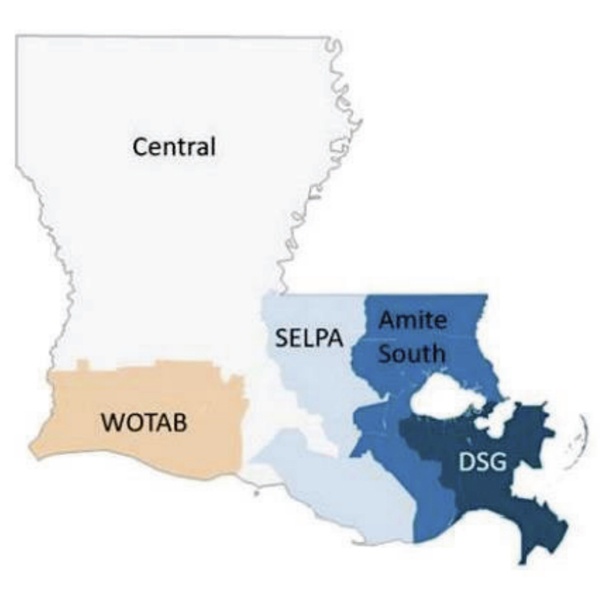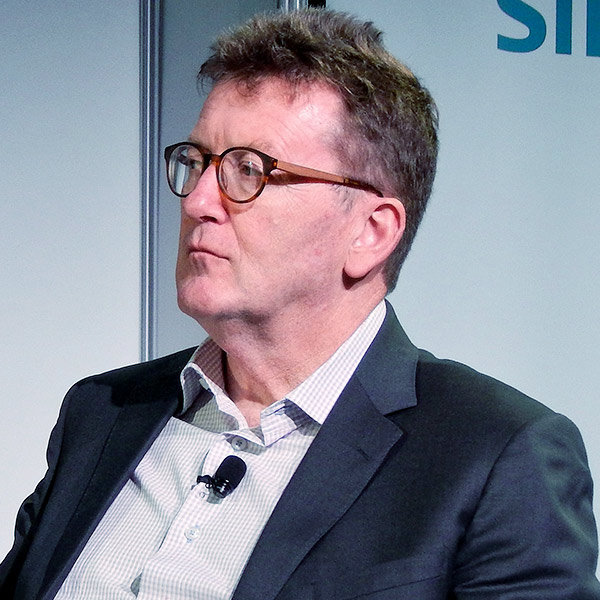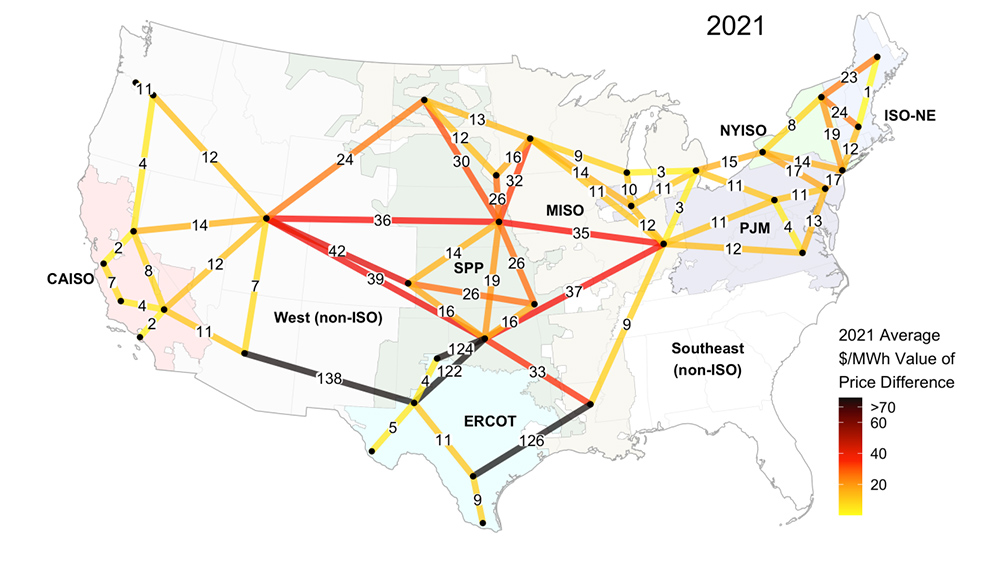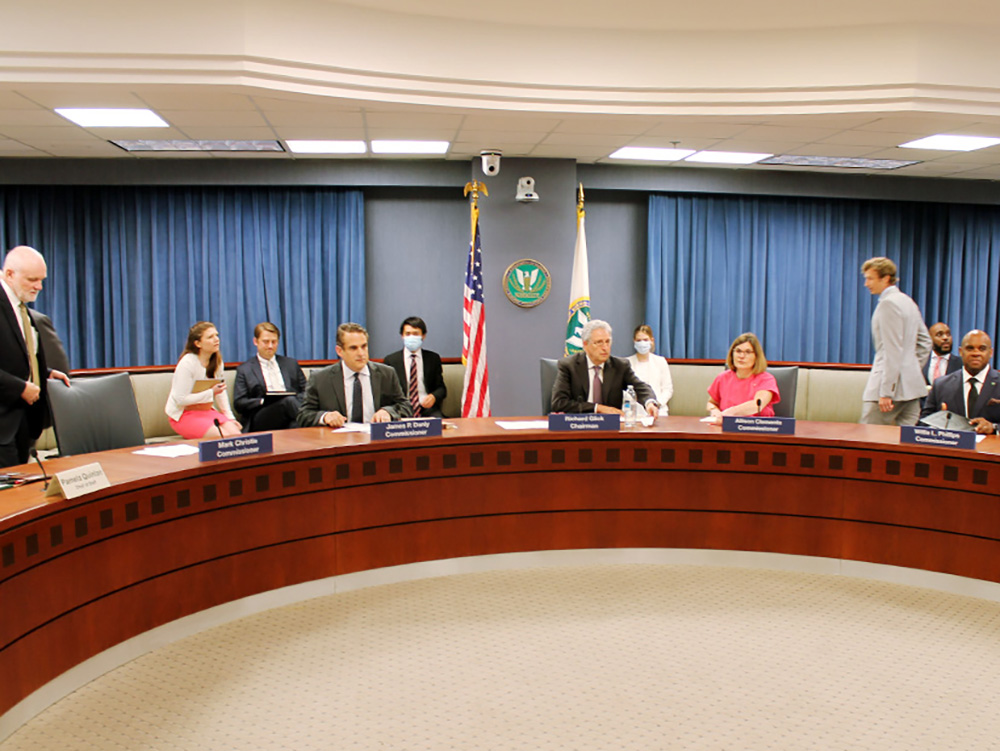Board Agrees to Lower Unsecured Credit Limit for Counterparties
AUSTIN, Texas — ERCOT’s Board of Directors last week unanimously eliminated unsecured credit limits for counterparties in the grid operator’s markets, rejecting stakeholder approval of a protocol change tabled since April.
The Technical Advisory Committee in April had modified ERCOT’s original nodal protocol revision request (NPRR1112) by reducing the unsecured credit limit from $50 million to $30 million, rather than cut the limit to zero. The grid operator then appealed that vote to the board in April, only to see it sidelined with a request for information on other RTOs’ unsecured credit practices. (See “ERCOT’s Credit Limits Align with Others,” ERCOT Technical Advisory Committee Briefs: May 25, 2022.)
According to ERCOT staff, the decision leaves the grid operator as the only one without unsecured credit limits between counterparties. ERCOT currently has $1.36 billion in outstanding unsecured credit.
Kenan Ögelman, the grid operator’s vice president of commercial operations, told the board during its Aug. 16 meeting that staff continue to recommend eliminating unsecured credit. Using unsecured credit moves credit costs from those receiving unsecured credit to the rest of the market and ultimately load, he said.
Ögelman also apologized for staff’s error during the June board meeting, when he said lowering the credit limit to zero would eliminate about $1 billion in the outstanding amount. “Actually, it was more in the $300 million range,” he said. (See “Maintenance Outage Scheduling Methodology Approved,” ERCOT Board of Directors Briefs: June 21, 2022.)
ERCOT’s Kenan Ögelman (left) listens as Garland Power & Light’s Darrell Cline lays out TAC’s position on unsecured credit. | © RTO Insider LLC
Darrell Cline, general manager for Garland Power & Light, advocated TAC’s position before the board. He said other “more appropriate” vehicles exist to target credit risk, pointing to NPRR1067, which sets market entry qualifications, continued participation requirements and credit risk assessments. The measure has been open since January 2021.
“Staff continues to believe that reducing unsecure credit is best for ERCOT. No other sophisticated markets allow for that,” interim CEO Brad Jones said, ticking off the Intercontinental Exchange, New York Stock Exchange and New York Mercantile Exchange as examples. “The very fact that the other” grid operators allow it is not “a compelling argument that we should do it as well. We know there’s a risk there.” He offered NPRR1067 as an opportunity to revisit the discussion.
The measure now goes before the Texas Public Utility Commission; it would become effective Oct. 1, 2023, allowing municipal utilities with fiscal years that end Sept. 30 to first close their books.
[EDITOR’S NOTE: An earlier version of this article incorrectly said that the board had reduced the unsecured credit limit to $30 million from $50 million.]
Staff Studying 17 GW of Crypto Load
ERCOT staff told directors that they are studying more than 17 GW of crypto mining load as it prepares its mid- and long-term forecasts.
 Jeff Billo, ERCOT | © RTO Insider LLC
Jeff Billo, ERCOT | © RTO Insider LLCAlluding to the Texas bitcoin rush, Jeff Billo, director of operations planning, said crypto load has grown since the studies began.
“Not all of that will be constructed, but the challenge is how much will be there in three to four years,” he said. “Midterm, it’s a challenge because [crypto load] is very price-responsive, more price-responsive than we have seen with other demand response in the past.”
ERCOT’s midterm load forecast uses two vendor models and five staff models to take an hourly look seven days into the future. It is updated hourly.
The long-term forecast uses one staff-developed model to provide an hourly forecast 10 to 30 years out and is updated annually.
Crypto miners have been drawn to Texas by its relatively low wholesale energy prices and because ERCOT pays industrial users to shut down during tight conditions. Their data farms typically use enormous amounts of power.
Billo said the amount of crypto load is not “constructive” to ERCOT’s planning models. He said staff are working with stakeholders to understand how much of it will show up. “We have to improve our processes to understand that behavior and build that into our model.”
The 2023 load forecast will be included in ERCOT’s December capacity, demand and reserves report, which projects 10 years into the future.
Directors Exert Control over Bylaws
The board’s Human Resources and Governance (HR&G) Committee agreed during its Aug. 15 meeting to modify ERCOT’s governing bylaws and other organizational documents, moving the authority for making future bylaw changes from corporate members to the directors and taking away members’ ability to veto the revisions.
Director Peggy Heeg, the committee’s chair, said that legislation passed last year after the February winter storm laid out “checks and balances” for ERCOT’s governance. She said it also required the PUC to approve all bylaws and their changes.
“While legislators and the governor clearly intended this board to have control over ERCOT, they were also very clear that corporate members are also valued contributors … and should have a voice in the bylaw-amendment process,” she said.
“It’s very clear from [the legislation] that this is what we’re directed to do,” board Chair Paul Foster said in agreeing with Heeg.
The committee urged the board to engage with members as it modifies the bylaws. Heeg also proposed the board to “move forward deliberately” in revising TAC’s reporting relationship and its structure.
“The market participants and corporate members have a very valuable place in contributing to this board,” Heeg said.
Under the suggested changes, members will still be able to propose amendments or comment on those under consideration. Board Vice Chair Bill Flores also said TAC will keep a seat at the table, “where it’s most valuable.”
ERCOT’s legal staff said it will take the board’s input and produce a redlined version of bylaw changes that can be shared with members. Their goal is to produce a final document by year-end for approval by the board and PUC.
Board Approves Tx Projects
The board approved two transmission projects with a combined capital cost of more than $760 million previously endorsed by TAC and recommended by the Regional Planning Group. (See “Members Endorse Two Tier 1 Transmission Projects,” ERCOT Technical Advisory Committee Briefs: July 27, 2022.)
The Bearkat-North McCamey-Sand Lake project in West Texas — consisting of two double-circuit, 345-kV transmission lines totaling about 165 miles — has an estimated cost of $477.6 million in 2021 dollars, up from $371 million in 2019 dollars. Oncor, Lower Colorado River Authority Transmission Services and Wind Energy Transmission Texas expect to complete the project in June 2026.
The Roanoke upgrade project north of the Dallas-Fort Worth area involves 7 miles of 138-kV lines, 26 miles of 345-kV lines, four 345/138-kV transformers and five 138-kV low-voltage buses. Oncor, the incumbent transmission service provider, expects to complete the upgrades by May 2025 at a projected capital cost of $285.9 million.
The projects are classified as Tier I builds because their costs exceed a $100 million threshold. Their status requires they receive TAC endorsement and the Board of Directors’ approval.
The directors also approved ERCOT’s proposal to change the reliability unit commitment cost-scaling parameter from 20% to 100%, effective Sept. 1. The grid operator’s greater use of the RUC process under its conservative operations posture this year has led to operators making many of their decisions outside of the process’s economic-based recommendations, leading to inefficient commitments.
The board also approved eight NPRRs, two other binding requests (OBDRRs), single revisions to the Planning Guide (PGRR) and the Retail Market Guide (RMGRR), and a system change request (SCR):
- NPRR1085: changes the physical responsive capability calculation and dispatch’s validity by requiring quicker updates from qualified scheduling entities (QSEs) on telemetered resource status, high sustained limit and other relevant information.
- NPRR1131: changes controllable load resource’s participation in non-spinning reserve from offline to online non-spin. The change sets a bid floor of $75/MWh, equivalent to generation resources’ offer floor when providing online non-spin. If a QSE also assigns responsive reserve (RRS) and/or regulation up service to a controllable load resource that has been assigned non-spin, the sum of RRS, reg-up and non-spin ancillary service resource responsibilities will be assigned a $75/MWh offer floor.
- NPRR1133: clarifies the responsibilities of DC tie facility owners and operators for reporting DC tie model data.
- NPRR1134: removes references to first available switch date (FASD) after recent mass transition/provider of last resort events indicated ERCOT’s use of FASD when processing switch transactions created an unintended negative experience for customers being transitioned from a bankrupt retailer.
- NPRR1135: modifies the definition of real-time generation resources with an offline non-spin (OFFNS) schedule to allow non-zero values for the billing determinant only if the resource is offline when it telemetered OFFNS. This ensures an accurate settlement when an online resource erroneously telemeters OFFNS.
- NPRR1136: adds clarifying language to the logic in place as fast frequency response is developed to ensure a QSE does not replace a regulation service with fast-responding regulation service.
- NPRR1137: replaces the annual requirement to review the OBD list with a four-year review cycle.
- NPRR1142: increases emergency response service’s (ERS) annual budget from $50 million to $75 million and gives ERCOT the ability to contract ERS for up to 24 hours in a standard contract term.
- OBDRR040: removes the controllable load resource providing non-spin schedules and regulation service schedules from the capacity calculations to align with NPRR1131.
- OBDRR042: increases the ERS annual budget and makes other administrative changes to the program.
- PGRR101: clarifies that a DC tie’s owner will provide the appropriate dynamic model data to its tie operator, which will then provide the data to ERCOT.
- RMGRR168: synchronizes ERCOT’s role and responsibilities with current market transactional solutions upon the removal of the “out-of-cycle” switch term and market process.
- SCR822: creates a new daily integration report and dashboard for energy storage resources similar to the current wind and solar integration reports and dashboards.





